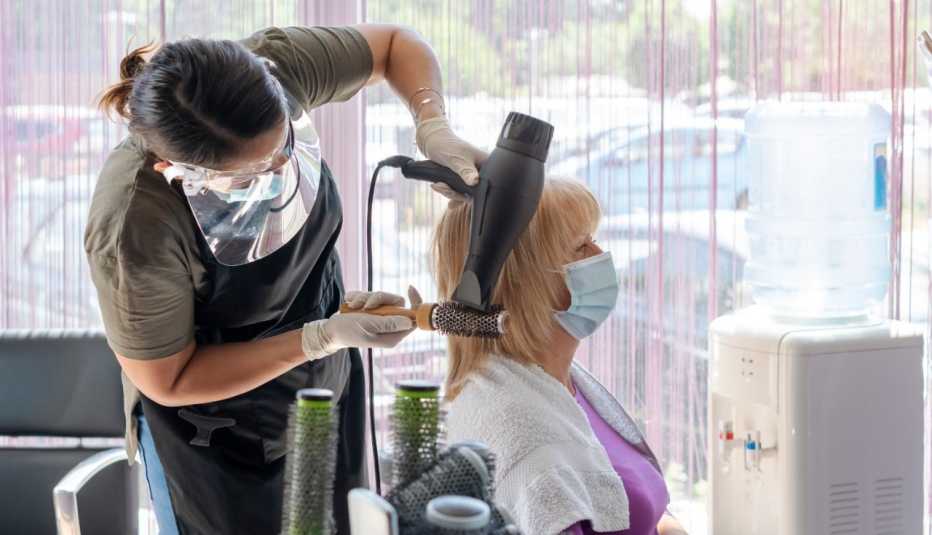AARP Hearing Center


Editor's note: The Centers for Disease Control and Prevention (CDC) on June 12 released a set of guidelines for the public as communities across the country ease stay-at-home restrictions and people begin to resume normal routines. Included are questions that can help individuals assess their risks for activities such as dining out, working out and attending large and small events. There are also tips for navigating each activity as safely as possible. You can find the guidance here.
En español | As stay-at-home orders lift in some areas, and businesses and community centers begin to open their doors again, you may be eager to head out. Who can blame you? But the lifting of restrictions doesn't provide a free pass to go back to all your usual haunts or resume your previous activities.
For one thing, the risk of exposure to the novel coronavirus is still out there. In fact, “the opening of many states doesn't mean COVID is decreasing in many areas, just that hospitals have capacity and the harms of shutdown outweigh the benefits,” says Daniel J. Morgan, M.D., a professor of epidemiology and public health and infectious disease at the University of Maryland School of Medicine. With the lifting of restrictions, he predicts, “we are likely to see more cases.”
The safest move continues to be to stay home as much as possible. But if you do venture out, there are ways to protect yourself, minimize close contact with others and reduce your exposure to the virus. Here's what experts advise about specific venues:
Eating at a restaurant
Morgan: “Most experts believe bars and restaurants are among the more difficult places to practice social distancing and cleaning. I would recommend anyone with chronic lung disease, diabetes, heart disease and even obesity and those over age 65 avoid these areas until we get through the COVID risk period — that is, until a vaccine is available or the virus stops circulating."
David Aronoff, M.D., director of the Division of Infectious Diseases at Vanderbilt University Medical Center in Nashville: “If the information isn't available on the website, call ahead and get a feel for what the restaurant is doing to keep its employees and patrons safe. Employees should be wearing cloth masks and the management should be screening them for symptoms of COVID on a daily basis. There should be plenty of spacing — at least 6 feet — between tables and good signage about maintaining distance and good hand-sanitizing practices. Generally, it's frowned upon to have waiting areas; it's better to have a system for texting when the table is ready.”
Michael G. Knight, M.D., patient safety officer and assistant professor of medicine at George Washington University Medical Faculty Associates in Washington, D.C.: “Enjoying a meal from your favorite restaurant via takeout or delivery is still the lowest-risk option. However, if you are living in a community that is reopening due to decreasing coronavirus infection rates, and you are not in a high-risk group, you may consider visiting a local restaurant that's taking safety precautions. These include seating at least 6 feet away from other diners, restaurant staff wearing masks and washing their hands frequently, and offering outdoor seating, which is preferred to indoor dining rooms.”
Shopping at retail stores
Morgan: “For those under age 65 and without chronic health conditions, I think these are generally safe. I would encourage being extra attentive to wearing a mask, avoiding touching your face, and practicing good hand hygiene before and after going.”


































































More on Health
Is It Safe to Go to the Pool During Coronavirus?
Health experts' advice on chlorine, hand hygiene, physical distancing and face-mask tans
10 Things the Pandemic Has Changed for Good
Telework and face masks aren't going away, experts say, but movie theaters might beSilent Spreaders: The Dangers of Asymptomatic Coronavirus Carriers
Some people are harboring and transmitting the virus without knowing it